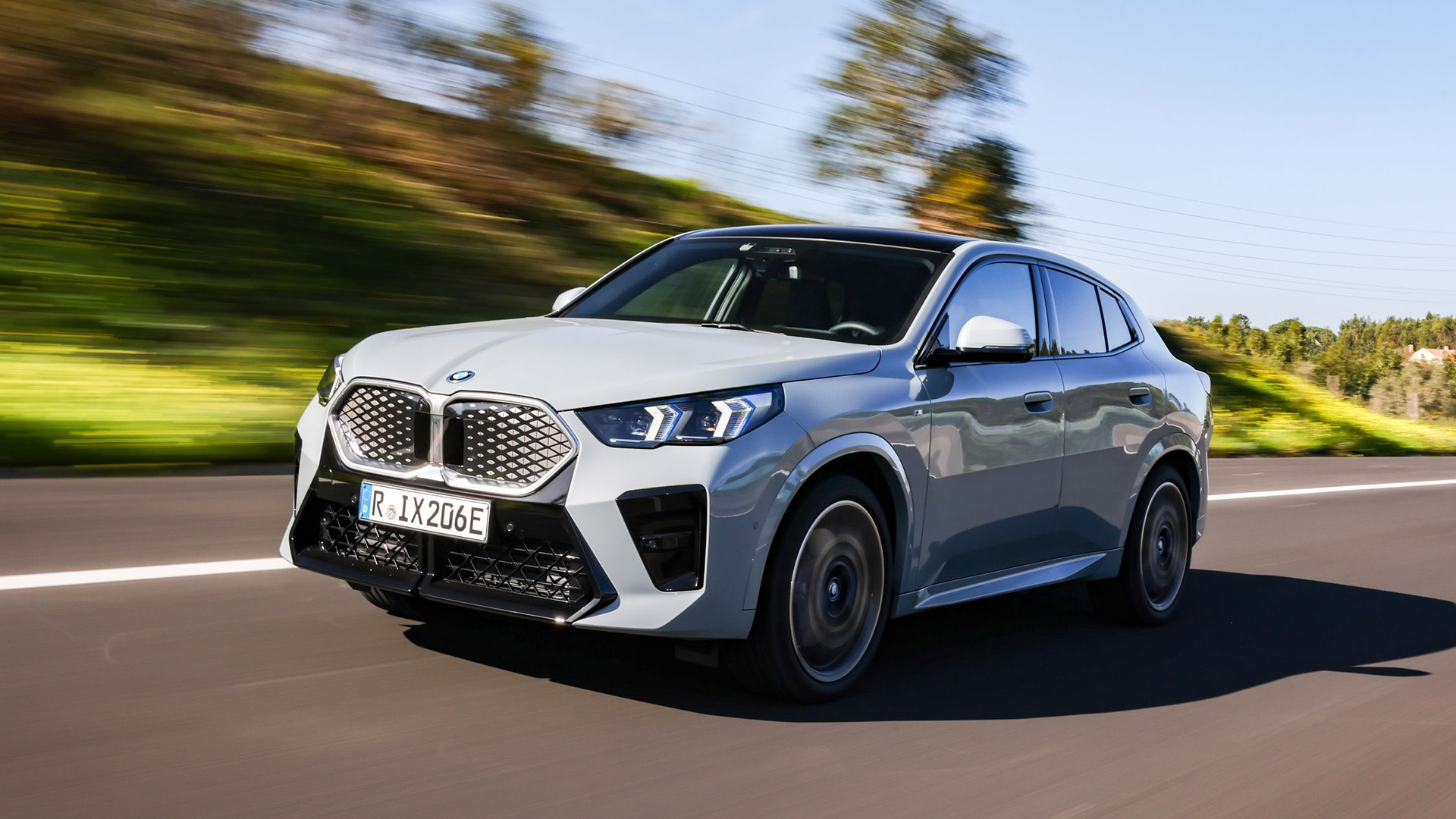
The BMW iX2 could be a sweet spot for electric car buyers. It’s sportier than the entry-level iX1 SUV, defining itself as a Sports Activity Coupé (SAC) rather than a Sports Utility Vehicle (SUV) yet costs less than a grand more for the equivalent model. While I’m not sure the term SAC will stick, this coupé-back style of SUV has proved a popular option for many electric buyers, so with the right performance and price, it could be a winner.
I was a big fan of the BMW iX1 when I reviewed it last year, as it offered lots of great features and styling for the money – including some hints of its big brother, the BMW iX. The only thing it lacked was range. The iX2 uses the same 66.5kWh battery and promises a similar range, but its exterior styling is much improved.
To see how it performs, I got to take the iX2 out for the day on the roads around the Cotswolds. I was driving the iX2 xDrive30 M Sport edition, which offers all-wheel drive rather than the front-wheel drive eDrive 20 M Sport. This is also only £1400 more than the equivalent iX1 version.
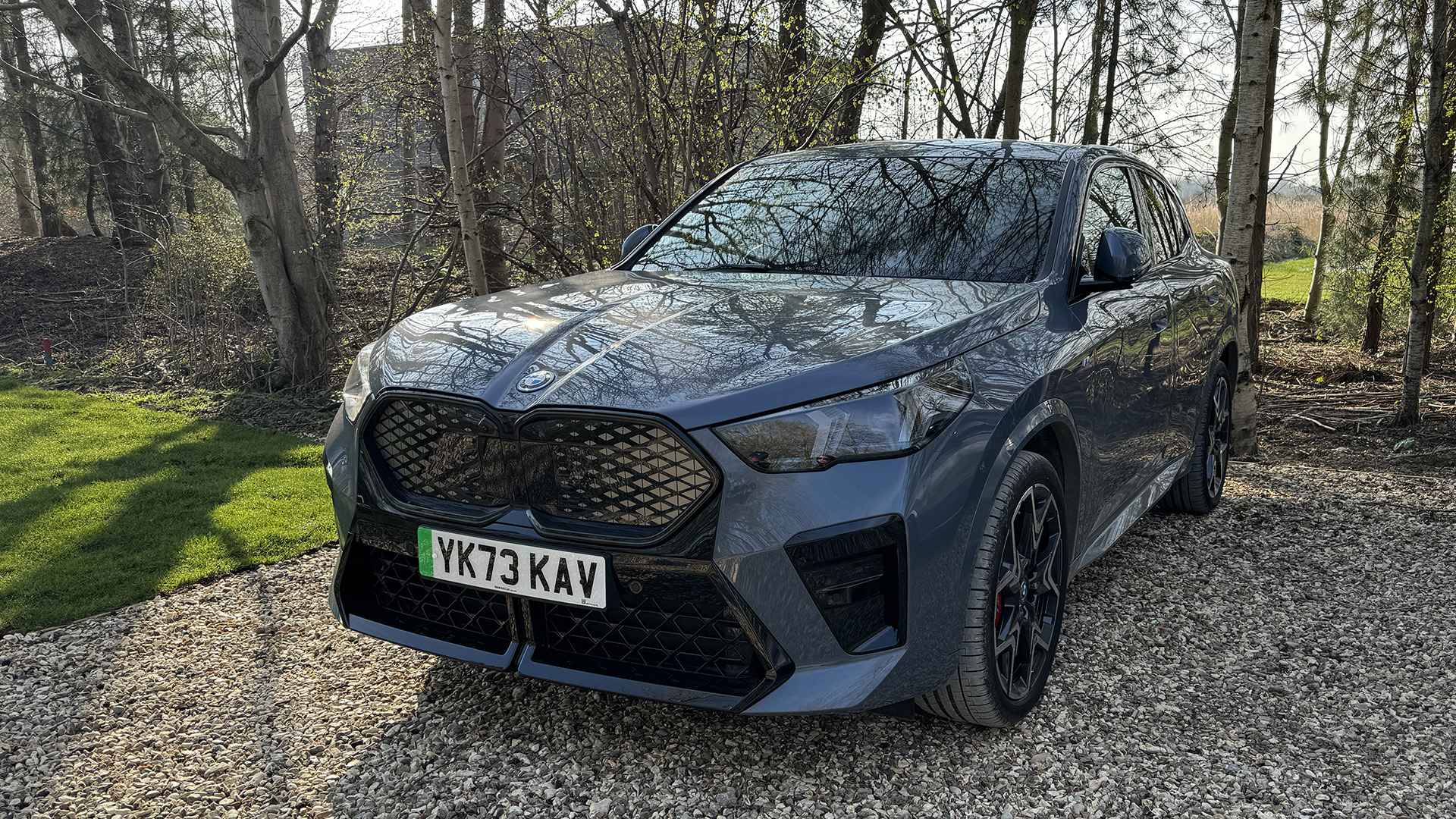
Price and availability
Prices for the iX2 start at £52,210 on the road for the eDrive M Sport model. There are currently no Sport or XLine versions available, like on the iX1, so the entry price is higher. As previously stated though, comparing equivalent models sees very little price difference between the two, leaving the choice down to personal preference.
Many of the tech features that come as standard on premium models are still available for the iX2 but as optional extras. For instance, the active cruise control comes as part of the Driving Assistance Plus package, for an additional £720, while the full steering and lane assistance is an additional £1650 on top of the Technology Plus Pack. To fully spec the car brings the price to just over £66k, which is still significantly less than an entry-level full-size iX.
Rather than the standard 19-inch, the model I drove featured the larger 20-inch alloys and the black leather interior (leatherette versions are also available). It also came with the Technology Pack, and cost £63,280 on the road. This is just a fraction more than a similarly specced Mercedes-Benz EQA.
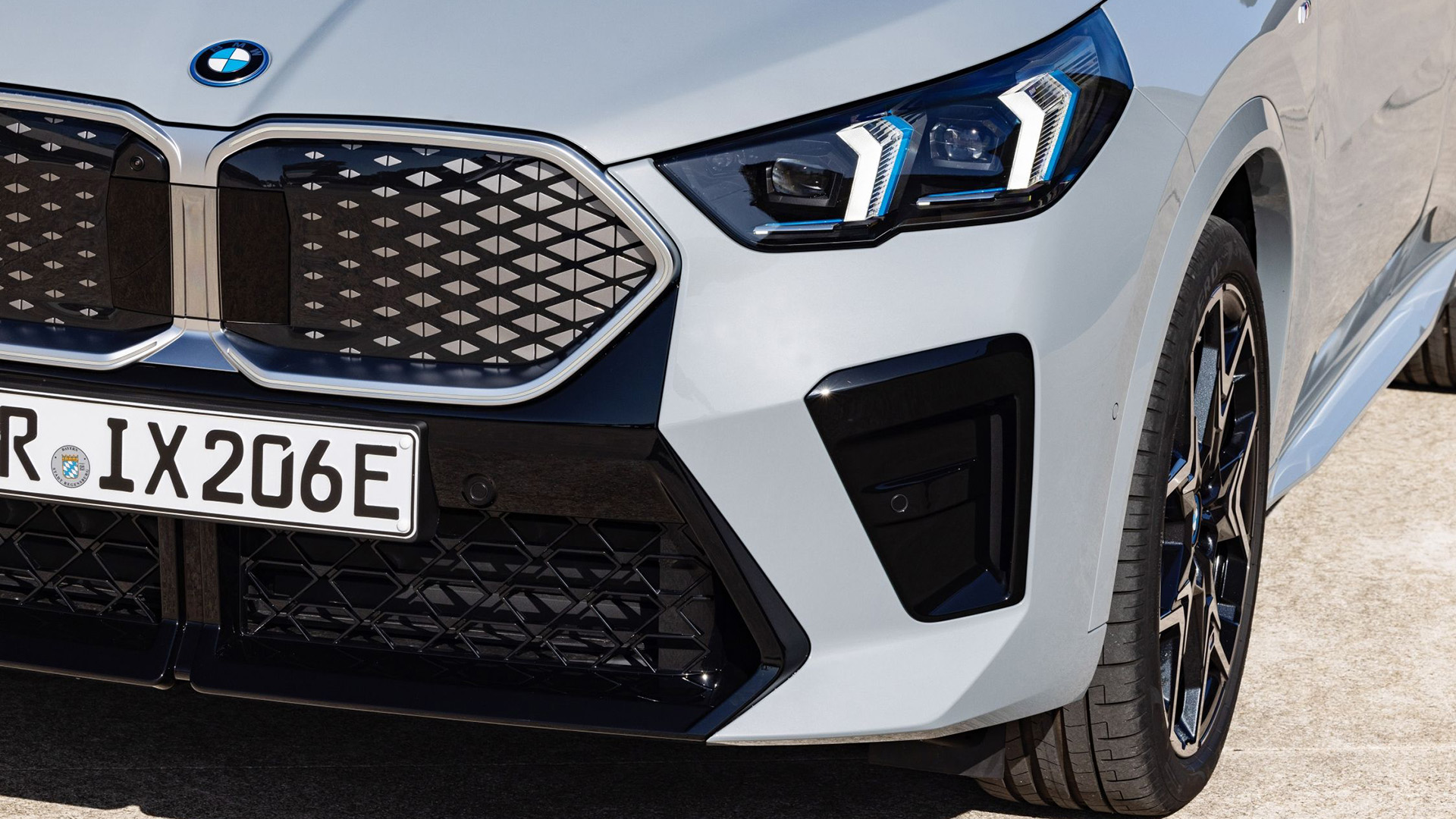
Features and design
The exterior of the iX2 certainly justifies its sports activity coupé designation. Compared to an SUV, it’s far less boxy, with a flowing roofline, lower windscreen and a rear spoiler to finish things off. At the front, there’s more of a pointed shark nose and a heavy groove down the centre of the bonnet. In the Storm Bay grey paintwork that my test car was in, it looks stunning.
That kidney grill is more restrained than on the iX too, finishing just about the licence plate. There’s an option to illuminate the grill with LEDs, which does look impressive when paired with its four-eye headlights.
Size-wise, it’s fractionally longer than the iX1, by about 54mm. It’s also wider and has a longer wheelbase than the original X2, which only came in ICE forms. Despite being a coupé back, you actually get more boot space in the iX2, with 525 litres behind the rear seats – though slightly less height.
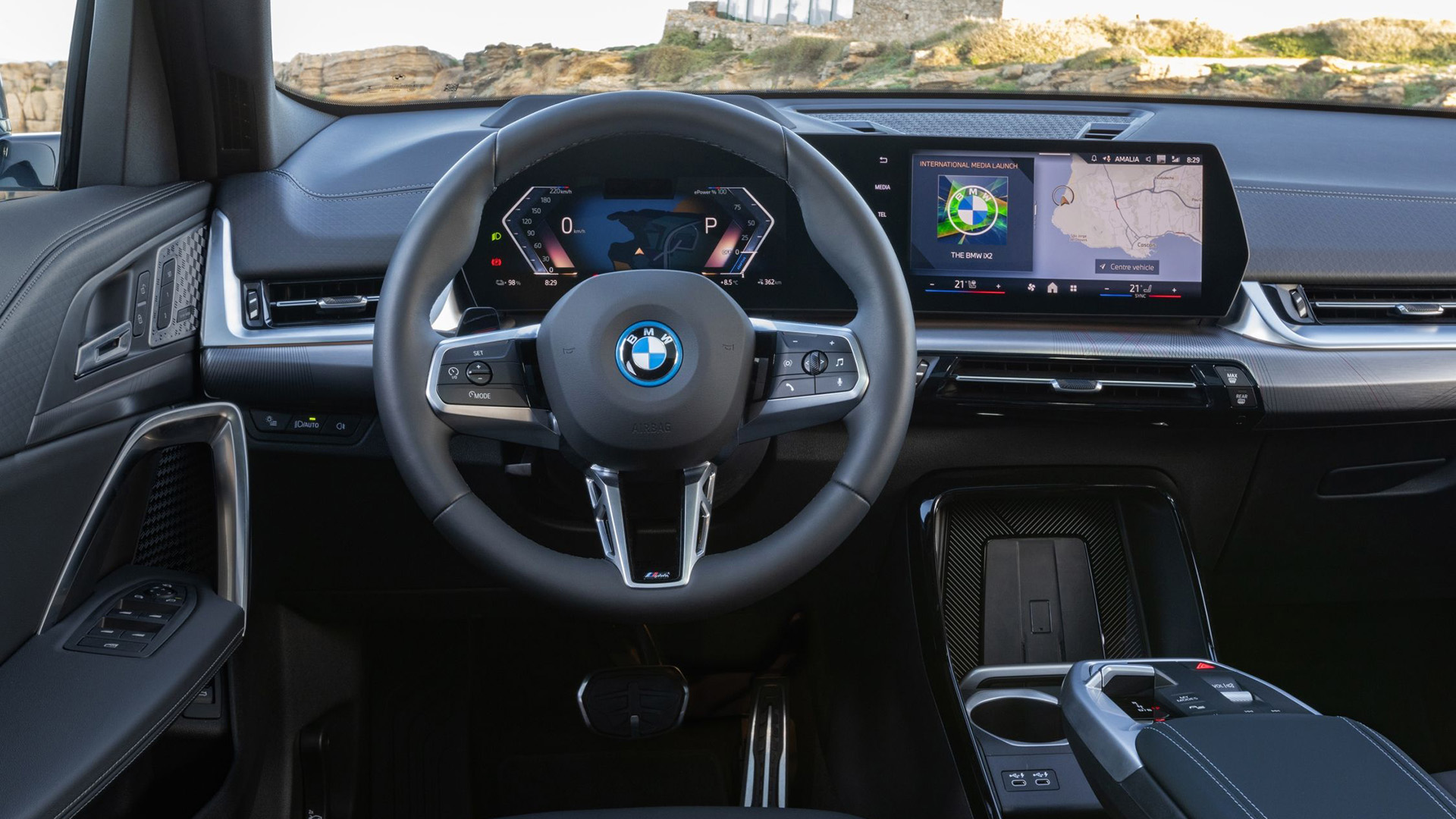
Interior and tech
The interior is practically identical to the iX1. You still have that iconic curved widescreen display, which combines the 10.25-inch driver display with a 10.7-inch touchscreen display which shows the rest of the infotainment options. This is running the latest BMW OS9 system, which is based on the Android open source and includes cloud-based maps and travel info. It also includes the latest voice assistant controls to save using the touchscreen for most functions.
There are still a few hard buttons on the centre console for key functions such as volume control, forward and back skip, drive selection, height control and parking brake. However, these do feel a little more plasticky than on premium vehicles.
While the premium driving features, like the adaptive cruise control, steering control and parking assistant don’t come as standard, they are all available here. That means that you can actually pick the functions that matter to you, and potentially keep the cost down by not picking them.
As we’ve seen on other BMW models though, these features are pretty clever and well worth opting for if you can. The parking assistant, for instance, can keep the last 50 metres of your journey in memory, so once you’ve done it manually once, you can let the car take over to repeat it. This makes any complicated parking manoeuvres a breeze. The steering and cruise control features (which combined create a level 2 autonomous drive) are also some of the best on the market.
There’s also some fun features available here too, such as a new video app on the infotainment system, allowing you to stream movies to the car. Plus there’s the ability to have in-car gaming with the AirConsole games controlled with your phone – and even use a console controller with it, later this year.
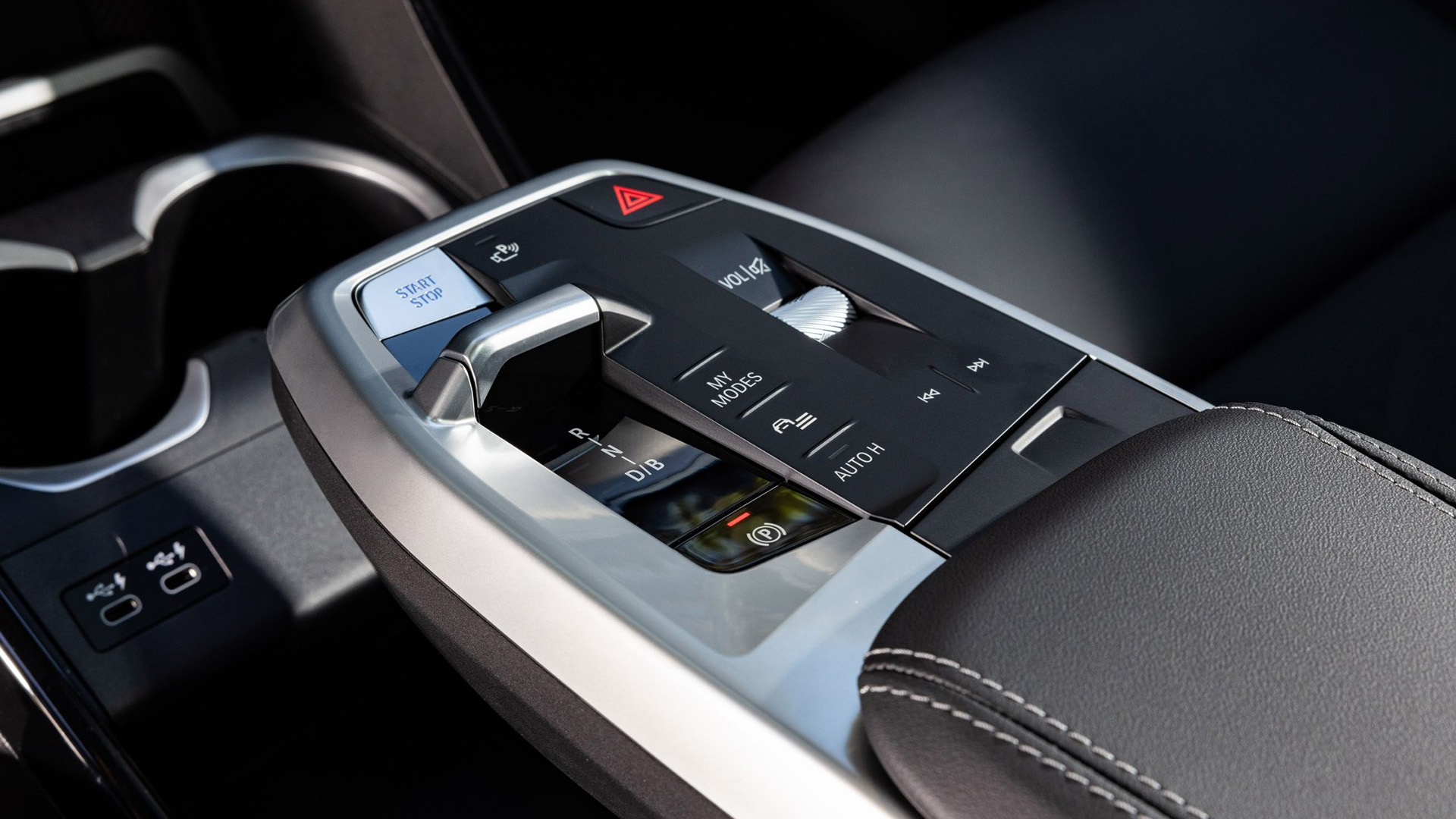
Drive and performance
The xDrive30 M Sport model delivers 306hp from its dual motors, giving you a 0-62mph of just 5.6 seconds. While I didn’t get to drive the eDrive20 M Sport rear-wheel drive version, which has 204hp, it won’t have anything like the poke.
This AWD model never feels short of power and with the sports mode engaged, it can really fly. There’s a paddle behind the steering wheel which gives a short burst of sport mode for when you just need a little burst too.
While the steering can be a little wafty in standard modes, the ride can feel a little firm. Especially on the larger 20-inch alloys. Switch to sport mode though and everything tightens up and makes the drive lots of fun.
Much like the iX1 this car is a pleasure to zip along country roads and around the city. It’s just a shame that the range figures aren’t a little more impressive for longer trips. The WLTP figures state 259 to 267 miles of range from the dual motor xDrive30, while the eDrive20 only does fractionally better with 272-283 miles. The Skoda Enyaq iV will give you 318 to 329 from its 4x4 version, while the front-wheel-drive Mercedes EQA will give you up to 345 miles.
There are certainly advantages to having a smaller battery on board like the 64kWh one here, it would have been nice to see a 300+ mile range figure, at least on the single motor model. It does mean that the 130kW maximum DC charging will still give you 10-80% in under 30 minutes though, and home charging takes around 6.5 hours on a 11kW wall socket.
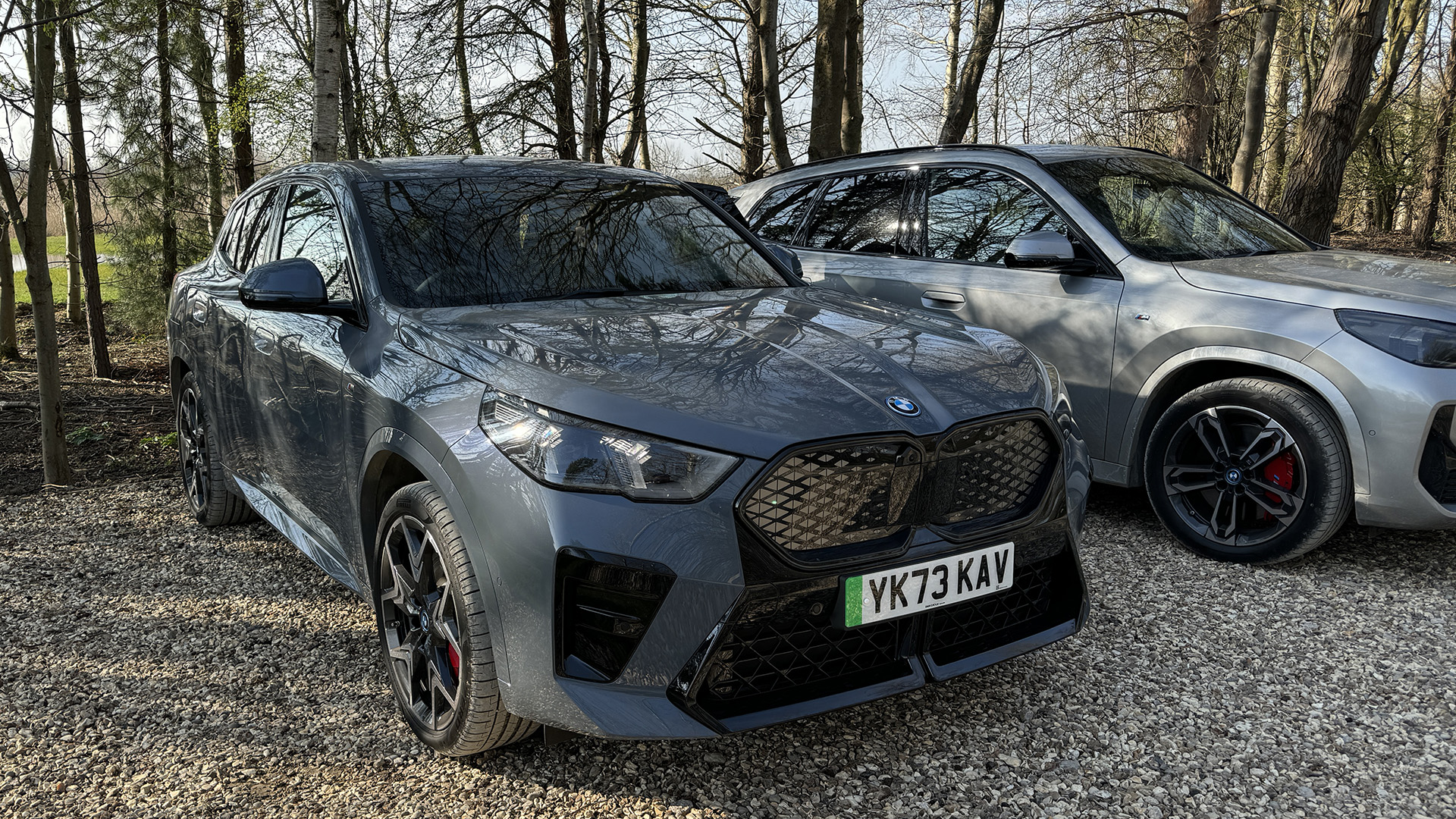
Should I buy the BMW iX2?
The BMW iX2 feels like the iX1 in different clothing, and that’s no bad thing. It’s a good-looking family car with plenty of space inside and plenty of power, should you need it. It would have been nice however, if it had offered something more. Yes, you can get all the latest tech onboard – if you upgrade to the premium packs – but there are other cars in its category that offer more for the money.
If you’re not bothered about advanced tech features, the iX2 provides a simple and fun solution for a decent price. You still that great looking interior with the curved screen but you’re not paying for features you don’t want. Though if you wanted to save a little more money, you may still opt for the iX1, particularly the base Sport model for £46k.
A lesser known fact is that the BMW iX2 and the new Mini Countryman are built on the same platform. While this means a similar range, it’s arguably a more fun and affordable prospect for those looking for a smaller SUV electric model.







